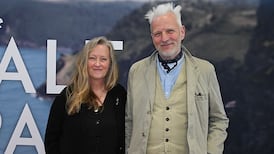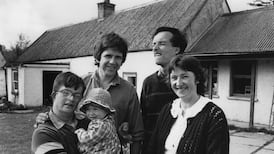Two Tribes (RTÉ One, Wednesday, 9.30pm) is Seán O’Rourke’s first big project with the national broadcaster since the Golfgate scandal. It’s an enjoyable profile of those Irish political monoliths Fine Gael and Fianna Fáil. But it also seems muddled, unfolding at some points as a sort of Reeling in the Years for political anoraks and at others as a rather halfhearted argument that the parties represent indistinguishable sides of the same coin.
In the first of two episodes, O’Rourke opens by asking: “Has the time now come for these once-bitter rivals to join forces once again?” But he then shoots down his own suggestion that there’s little to differentiate Fine Gael and Fianna Fáil by listing the many ways in which they are ideologically and culturally opposed.
[ Golfgate? I can smile about it now, says Seán O’RourkeOpens in new window ]
There’s the distance between what some might call Fianna Fáil’s Godfather-style leader Charles Haughey and Fine Gael’s bumbling professor Garret FitzGerald, and between what others might say has at times in the past been Fianna Fáil’s approach of regarding society as a collection of vested interests to be bought off, one by one, until you run out of money, and Fine Gael’s dull culture of economic prudence (too dull, at least, for a significant chunk of the electorate).
O’Rourke says none of this out loud. But it seems implicit in the picture he paints of the two political parties.
In the wings, meanwhile, like a ticking bomb, is Sinn Féin, whose threat to political orthodoxy will be explored in part two, on Thursday night.
Two Tribes is more fun when it abandons the rigorously analytical path and just plays the hits. There’s lots of Haughey and FitzGerald squaring up on Today Tonight, with Olivia O’Leary as the MMA ringmaster. “I remember being at the Fine Gael ardfheis,” says O’Leary. “It was very quiet.” She contrasts that with Haughey and his love of “the roar of the crowd”. He understood the power of TV in much the same way as Sinn Féin has harnessed social media. By contrast, says O’Leary, FitzGerald “would come in with bits of paper falling out of his pocket”.
She tells a story about the Fine Gael leader on the hustings in Cork and encountering a young boy in red and white. FitzGerald had a think and concluded that the kid was a supporter of the Polish Solidarity movement. “No,” the boy replied. “It’s the Cork colours.”
What’s missing is the most important part of this picture: the voters. Who among us voted Fianna Fáil and who Fine Gael? This is touched on when O’Leary notes that Haughey was always perceived, positively, as robust when dealing with Margaret Thatcher, the late British prime minister. But Two Tribes could do with more about political grassroots and how these divisions could split families down the middle.
Two Tribes also jumps around too much. One moment we’re in the 1990s and the early peace process. Then it’s back to de Valera and the origins of the Irish Press newspaper before landing in 2011, after the collapse of the Celtic Tiger, for Fianna Fáil’s evisceration at the ballot box. “What was my feeling?” Micheál Martin says of that period. “Relief the election was over…”
These are all fascinating chapters in Irish history. And, for those old enough to recall, there is huge nostalgia in the footage of Haughey and FitzGerald and their assorted lieutenants and cronies. But, at least in part one, Two Tribes doesn’t make a persuasive case that Fine Gael and Fianna Fáil are a single entity artificially riven by the Civil War.
The documentary might have worked better as a straightforward look back at the hard-knuckle politics of decades past. That, you suspect, is probably the film O’Rourke secretly wanted to make.














